SaaS Tools for Business Growth: Six Essentials You Must Have
- Anurag Pandey
- Last updated on May 15, 2024
- SaaS
- 10 minutes read
Table of Contents
ToggleDid you know that the majority of companies employ SaaS solutions? This is because SaaS products offer an inexpensive, scalable, and adaptable approach to optimize procedures, boost productivity, and gain a competitive advantage. Users can become experts in all crafts. An internet connection allows you to manage design, publication, and direct mail marketing. To start a company, no particular expertise or pricey teams are required. SaaS has you covered.
Whether you’re new to the business world or an experienced player, you’ll need the necessary tools to grow and thrive in this highly competitive field.
SaaS organizations are expected to provide quality at all stages of the user experience in order to maintain a positive client relationship. The good news is that the eCommerce tech development industry is experiencing an increase in cutting-edge solutions that assist startups and small enterprises in embracing growth.
However, with so many opportunities on the market, it’s difficult to select a SaaS solution worth investing in. As a full-service web development company, we have worked with hundreds of SaaS organizations. In this guide, we will look at the potential of SaaS development in business and introduce you to the top six tools that are changing how businesses function and grow.
What do you Understand by SaaS?
SaaS (software as a service) is a delivery model in which clients license centrally hosted software through a subscription plan. Any company that leases software through a central, cloud-based infrastructure is considered a SaaS development company.
A SaaS provider is responsible for the servers, databases (and the data they contain), and other tools that enable their product to be accessed and used. The subscription plans available to clients can vary greatly between firms; some SaaS business models include delivering various apps within their product, with different subscription plans providing access to different services.
What is a SaaS growth strategy?
A SaaS growth plan is a collection of marketing strategies and tactics designed to increase client acquisition and the reach of a SaaS product. It often consists of a combination of paid, organic, and inbound marketing initiatives targeted at generating leads and converting them to paying customers. Adopting SaaS solutions into your existing systems has numerous benefits, particularly when combined with time management tactics for more productive work.
Top 6 SaaS Tools for Business Growth
Here is a list of six SaaS tools for business growth. All have diverse use cases to assist you and cover various areas of growth and success, and they can all make a significant difference for your mobile app.
1. Refiner – The No.1 Customer Feedback and Survey Solution for SaaS
Refiner is a consumer feedback and survey tool designed exclusively for SaaS enterprises.
Refiner enables you to survey people and gather client feedback in order to improve your SaaS business and increase customer engagement.
With Refiner, you can:
- NPS, CSAT, and CES surveys can all be used to collect customer feedback.
- Create and send surveys using email, an in-app widget, or survey sites.
- Automate growth through precision targeting.
- Use user data and survey responses to generate personalized experiences.
- Monitor and improve client success.
- Use reporting and segmentation features to thoroughly analyze survey results.
- Refiner may be integrated with Zapier, Google Sheets, Hubspot, and other platforms.
Pricing: There is a 14-day free trial while the pricing depends on the number of features your company needs. Essentials package starts at $79/month, Growth starts from $199/month and there is also a customized Enterprise package.
2. Customer.io
Customer.io is a marketing automation platform that can help you manage email campaigns, and send the right message at the right time across all stages of your funnel.
You can use it for customer feedback, upselling, re-engagement, onboarding, welcome emails, renewals, nurturing, and adoption.
Each customer has various demands, and you want to provide a personalized experience. Use numerous channels to communicate with all users (email, push, SMS, Slack) and send different messages depending on individual needs (automatic workflows, newsletters, transactional emails, email templates).
Pricing: The Basic plan starts from $100/month and the Premium plan starts from $1000/month
3. SEMRush
SEMRush is a widely used tool for organic marketing growth. It allows you to increase organic traffic by combining SEO, content marketing, PPC, and social media in one spot.
Some of its important aspects are:
- SEO- Increase organic traffic, identify keywords, examine any domain’s backlinks, do technical SEO audits, and more.
- Content marketing- Generate content that ranks highly, locate topics that engage with your audience, and track brand mentions and content reach.
- Market research- Examine the traffic of any website and uncover keyword gaps.
- Advertising- Reach more prospects while spending less. Find the ideal keywords for PPC ads.
- Social media- Develop an effective social media strategy, schedule posts, analyze performance, and design and optimize social ads.
Pricing: The Pro plan starts from $129/month while additional plans are starting from $249/month and $499/month for bigger projects and additional features.
4. Slack
Slack is one of the most popular tools for team communication. It’s an organized way to stay in touch with your team members through channels, automation, and app integrations that can transform your digital workspace.
You can also use Slack for external communication and automation, such as integrations to speed up your customer service or workflows to give you an overview of your sales progress.
Pricing: The paid plans are priced based on the number of users required. The Pro plan starts at $245/month per person.
5. Zapier
Zapier is a strong automation solution for unifying your tool stack using numerous triggers.
Zapier provides a user-friendly interface that allows you to create automated workflows, known as Zaps, between various applications. With its extensive app integrations, you can streamline processes, save time, and enhance productivity by automating repetitive tasks across your tool stack. There are many apps available to help you optimize your workflow and make your daily tasks easier without the usage of coding.
If you’re not sure how to utilize it, look up the tool you wish to use and get advice for possible automation.
Pricing: The free forever plan includes basic automation, and premium options start at $19 per month.
6. HubSpot
HubSpot is a comprehensive content management platform that enables businesses of all sizes to manage their content effectively across all digital assets.
The campaign assistant in HubSpot allows you to easily write landing page copy, blog pieces, and email campaigns. You may also utilize the blog idea generator to come up with original and intriguing titles for blog entries that will keep you going for weeks if not years!
HubSpot also features an analytics function that delivers information on a variety of variables, including audience engagement, content performance, and conversion rates.
HubSpot is also rather feature-rich, allowing it to function as a unified suite for all of your SaaS development content, publishing, and analytic needs. So, if you’re a content marketer looking to consolidate your content management, Hubspot is a great option.
Hubspot has a great pricing strategy starting from Professional at $800/month.
Top Three SaaS Business Stages
1. Early-stage
In the early stages of your SaaS business, you, as the business owner or entrepreneur, are still at the bare-bones level. You’re unlikely to have a large number of clients, and your product will still be in early SaaS development. You may be looking for your first round of pre-seed capital, or you may have decided to go with the bootstrapping approach to preserve more control over your operations.
In the early stages, your staff will be tiny, you will most likely be focusing on only one product, and you may not yet be turning a profit.
2. Growth stage
Things become more exciting during the growing stage. You’ve produced something that’s rapidly growing, your product is getting subscribers, and you’re starting to generate MRR and possibly positive cash flow.
To begin and prolong your growth stage, you will need to raise significant capital that will allow your firm to expand its personnel, invest in product SaaS development and iteration, and scale. The SaaS business model can be supported by a variety of finance models, including:
- Venture capital: It is the most glamorous way to raise funding for your startup. It is provided by firms or funds that see great growth potential or a solid track record of recent success in a SaaS development company, which is enough to justify large financial support.
- Angel investor: It is a single operator with significant financial resources who is willing to invest in your firm. They can be perfect for entrepreneurs seeking their first large investment, but more lately, so-called “super” angels have begun to play an important role in subsequent funding rounds as well.
3. Mature stage
A SaaS development company that has reached the mature stage has proven itself and may call itself established. A mature company caters to a well-defined target customer and has a trustworthy product that is regularly updated. The company is generating a healthy MRR, and all other critical KPIs (more on those to come) are stable. Mature-stage enterprises may still seek and receive investment, but it will be on a much greater scale, focused on breaking into new markets or buying out competitors.
The fundamental question a SaaS company should be asking itself at this point is: when was the last time we reviewed our pricing strategies? SaaS organizations frequently reach the mature stage and become complacent, believing that because their business is consistently profitable, it must be operating at peak efficiency. Mature-stage SaaS companies are frequently positioned on a mountain of potential revenue that they waste due to poor pricing decisions.
Three main components of a SaaS growth plan
These three main factors serve as the foundation for every SaaS growth strategy, ensuring that your SaaS company can carry out its development plans successfully.
1. Market strategy
Understand your target market and determine the best strategy to reach them. This step entails investigating your target consumers, their demands or pain spots, and the SaaS solution they are seeking. It also entails creating a go-to-market strategy that outlines how to reach your target market and which channels to employ to promote your SaaS product.
2. Product Strategy
Ensure that your SaaS solution fits the needs and addresses the pain points of your target audience. In this strategy, you do customer research, create a product plan, and repetitively enhance your product in response to feedback. You also choose a price strategy that is suitable for your target market.
3. Go-to-market strategy
Place your SaaS product in front of your target clients to create leads. A go-to-market strategy entails designing a SaaS marketing plan, producing attractive content, and utilizing the appropriate channels to reach your target audience. It also entails creating buzz for your SaaS product and establishing a sales pipeline that transforms leads into clients.
SaaS tools for business growth: Final Thought
So there you have it: the top six SaaS solutions that are altering business development. From Refiner feedback sales intelligence to Hubspot’s sophisticated content workflow planning, these technologies have proven effective in increasing productivity and optimizing corporate processes.
ControlF5 is the top web development and mobile app development company in India which will offer you the best practices to construct your bespoke SaaS software quickly and efficiently. With our devoted and skilled staff, we can turn your business idea into a fully functional SaaS solution. If you’re interested in learning more about the tech stack we employ for SaaS development to understand more, Contact us right away..!
Anurag Pandey
Recent Posts
Categories
Hire Developers
About us
Popular Posts
Tags
Related Articles
How to Develop an AI-powered SaaS Product in 6 Steps
AI has become a strong buzzword in the commercial sector and for good reason. SaaS as a software delivery model and AI as a technology for enhancing software product capabilities work well together. SaaS organizations, in particular, can benefit greatly from adopting AI capabilities.
MVP Product Development – How to Design and Build Minimum Viable Product
Have you ever thought about what successful apps such as Facebook and SaaS products have in common? They’ve all used MVP development to grow into mature platforms beloved by millions of customers. When establishing a new application, many IT startups aim for a minimally viable product as their initial goal.Well, MVP holds various products with ample features to attract early adopters and verify a product concept early in the product development cycle.
Sign up for our Newsletter











